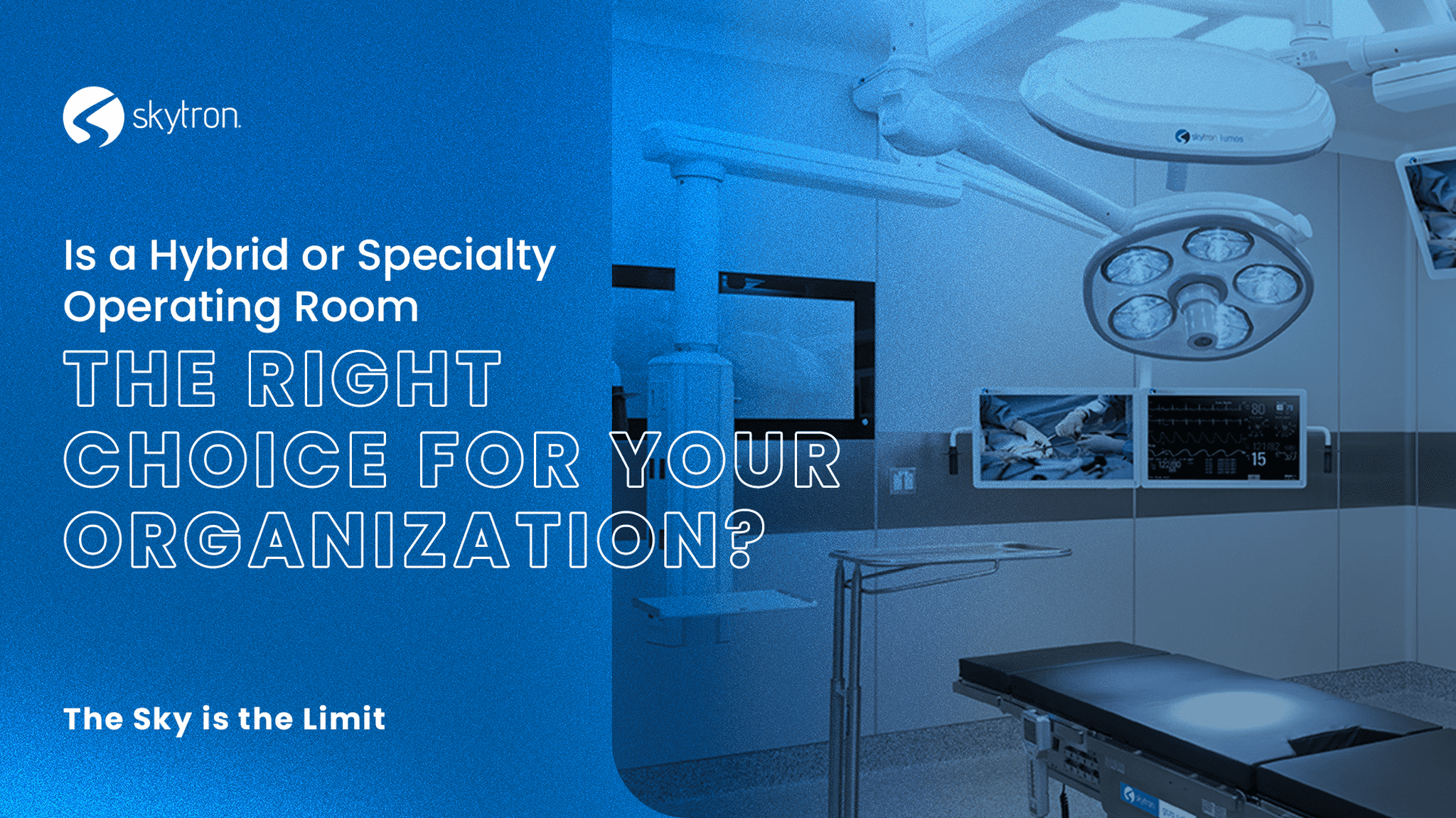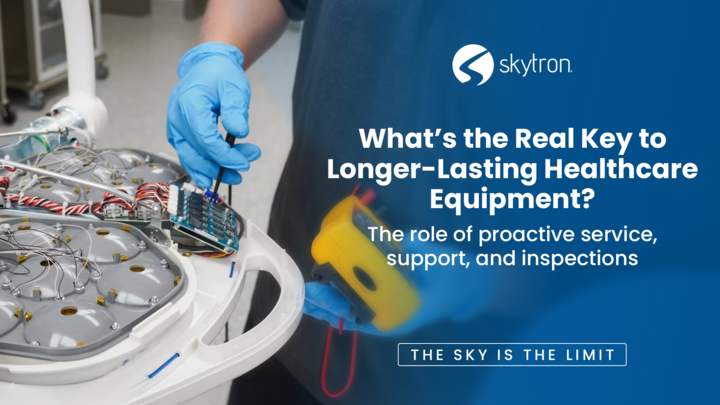
-
Written ByRebecca Kinney
-
PublishedOctober 1, 2025
The best decisions come from pairing clinical insights with long-term planning.
A Framework to Guide Your Next Steps
Hospitals and surgery centers making decisions about new OR construction or renovation often face an important question:
“Do we invest in a hybrid suite with advanced imaging integration or focus on specialized rooms dedicated to a single discipline?
Each model offers advantages, and the right choice depends on aligning room design with clinical demand, case mix, and growth strategy.
This edition of The Sky is the Limit takes a look at the strengths of each approach and provides a framework to help your leadership teams determine which model best supports your future.
Understanding the Models
Hybrid ORs
Hybrid operating rooms combine the capabilities of a surgical suite with advanced interventional imaging, often including fixed angiography, CT, or MRI systems.
This allows both open and minimally invasive procedures to be performed in the same room, often in a single encounter. Cardiovascular, neurovascular, trauma, and thoracic procedures are common use cases.
Specialized ORs
Specialized ORs are designed and equipped for a specific discipline, such as orthopedics, neurosurgery, or cardiovascular surgery, optimized with dedicated technology and workflows.
They can increase efficiency for high-volume specialties, streamline equipment usage, and provide tailored ergonomics for surgical teams.
Advantages of Each Approach
Hybrid ORs
Flexibility: Enable multiple specialties to access advanced imaging in real time, reducing patient transfers and improving safety.
Future-Proofing: Support evolving techniques like endovascular repair, robotics, and image-guided minimally invasive procedures.
Multidisciplinary Collaboration: Allow surgeons, interventional radiologists, and anesthesiologists to work in the same space.
Reduced Redundancy: Fewer rooms needed for imaging and surgery, potentially lowering duplication of equipment costs.
For a deeper dive into hybrid OR benefits, see our earlier article: Is a Hybrid Operating Room Worth All the Hype?
Specialized ORs
Optimization: Room layout, equipment, and sterile field flow are customized for one specialty, increasing throughput.
Cost Control: Lower upfront investment compared to hybrid ORs, which can exceed $5M in construction and equipment.
Predictability: Teams working within the same specialty can standardize protocols and minimize variability.
Space Efficiency: More rooms can be built within the same footprint compared to one large hybrid suite.
Framework for Decision-Making
According to AORN’s OR design recommendations and Facility Guidelines Institute standards, the decision between hybrid and specialized models should align with clinical demand, utilization patterns, and capital planning.
Consider the following:
1. Case Volume and Mix
- Do you have consistently high demand in one specialty that justifies a dedicated room?
- Or do you see growth in complex, multidisciplinary procedures where a hybrid adds value?
2. Strategic Growth Areas
- Are you developing a service line that relies heavily on imaging-guided procedures, such as cardiology or neurovascular surgery?
- Do you anticipate robotics or advanced navigation systems that would benefit from hybrid integration?
3. Space and Budget Constraints
- Hybrid ORs require significantly more square footage and ceiling support for equipment booms and imaging systems.
- Specialized rooms, while smaller, may require more total rooms to cover different specialties.
4. Operational Efficiency
- If utilization of certain specialties is uneven, a hybrid OR may help avoid underused specialized rooms.
- If predictability and high turnover are priorities (such as in ASCs), specialized rooms often perform better.
5. Staff Expertise and Training
- Hybrid ORs require multidisciplinary training and flexible staffing models. Complex procedures may require teams of 8-20 people including anesthesiologists, surgeons, nurses, technicians, perfusionists, and support staff from device companies.>/li>
- Specialized ORs can focus on consistency and narrow skill sets, streamlining orientation and education.
Making the Decision
Neither hybrid nor specialized ORs are inherently superior; it depends on your organization’s patient population, strategic goals, and financial realities.
A large tertiary hospital with a thriving CV program may find a hybrid suite indispensable, while an ASC focused on ortho cases may benefit most from dedicated, streamlined rooms.
The best decisions come from pairing clinical insights with long-term planning.
As AORN notes:
“Aligning OR design with anticipated service line growth and evolving surgical technologies is the key to protecting your investment and ensuring optimal patient care.”
References
1. Definitive Healthcare. How Hybrid Operating Rooms Are Changing Inpatient Care.
2. Facility Guidelines Institute. Hybrid OR Design Basics.
3. BFW. Overview of Hybrid Operating Rooms.
4. Cleveland Clinic. Remains Nation’s No. 1 Hospital for Heart Care in U.S. News & World Report’s 2022–23 Best Hospitals Rankings.
5. AORN Journal. Best Practices in OR Planning and Design.
6. Skytron. Is a Hybrid Operating Room Worth All the Hype?
7. Medical Design and Outsourcing. Approaching ROI in Hybrid ORs.
8. NCBI. Team composition and staff roles in a hybrid operating room: A prospective study using video observations.





